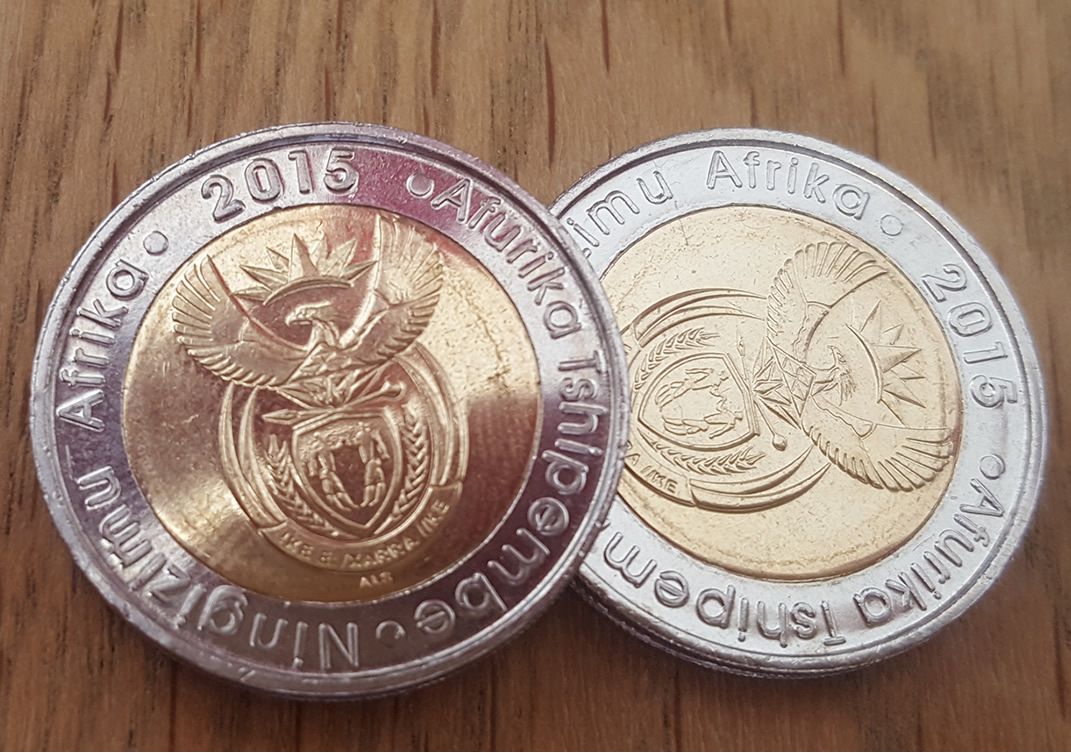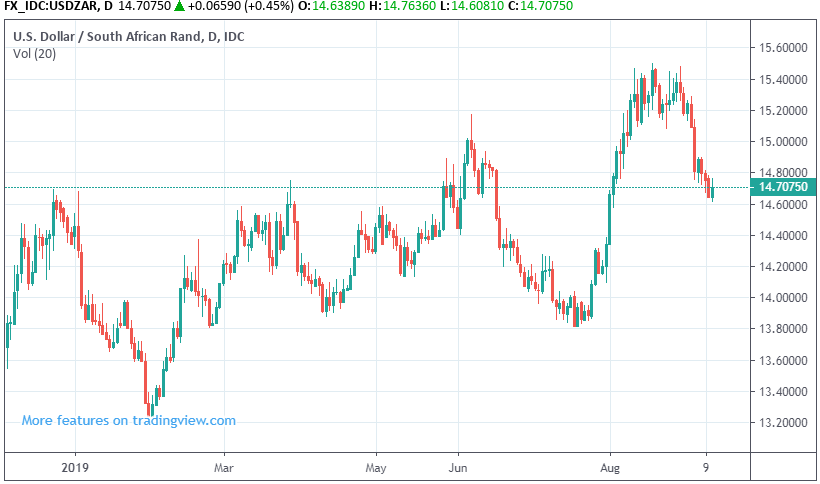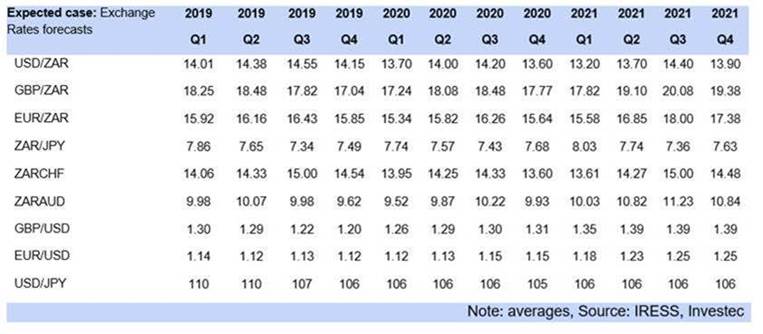South African Rand Reverts Eyes to the Federal Reserve
- Written by: James Skinner

© Pound Sterling Live
- ZAR slips as market dials down expectation for Fed rate cuts.
- Olive branch from China prompst reappraisal of Fed outlook.
- Investec and RMB say a Fed let-down will hurt ZAR next week.
- But Fed commitment to more easing may lift ZAR into year-end.
The Rand tumbled Wednesday as investors became less pessimistic in their outlook for U.S. growth amid renewed hopes of a deal to end the trade war between the world's two largest economies, but local analysts say the South African unit will now take its cues from Federal Reserve (Fed).
U.S. economic growth and the related Federal Reserve interest rate policy wll be the most decisive factor in setting the direction of Rand exchange rates in the months ahead, especially after Moody's signalled on Tuesday that it will give the South African government time to formulate a credible plan before any decision to remove its top 'investment grade' credit rating. And the September 18 rate decision could cut in either direction for the Rand.
"Weak data prints from a number of key economies are expected to influence the Fed, after its last FOMC meeting at the end of July saw the meeting’s 25bp rate cut accompanied by a tone that was less dovish than the markets expected on the prospect of future rate cuts," says Annabel Bishop, chief economist at Investec Bank. "While financial markets have cheered on expectations of additional monetary stimulus from a number of Central banks, further marked evidence of weakness in key economics could reignite risk-off market sentiment and the rand is likely to remain volatile through year end and into next year."

Above: USD/ZAR rate shown at daily intervals.
Interest rates rose sharply in the U.S. last year as policymakers lifted the Fed Funds rate four times, leaving it at 2.5%, and although it's since been cut to 2.25% the level of U.S. borrowing costs and resulting strength of the Dollar is still a weight around the ankles of the emerging world including South Africa. High U.S. bond yields have driven the Dollar higher in the last 18 months and made it more expensive for countries like South Africa to service already-high levels of foreign-currency denominated debt.
Dollar pressures have got holders of the South African Rand hoping for not only a 25 basis point interest rate cut from the Fed next Wednesday, but also hoding out for a clear signal that further rate cuts will follow later in the year, although recent developments in the U.S.-China trade war are making it difficult for analysts to gauge which direction the bank will lean in come next week.
The Fed cut its interest rate in July but the accompanying statement from the bank left markets with the impression it would, at most, reduce U.S. borrowing costs on just one more occasion this year in what the bank termed a "mid-cycle adjustment." However, since then President Donald Trump has imposed tariffs on more Chinese goods imports and China has retaliated, darkening the outlook for growth in both countries as well as the global economy.
"Growing expectations of another 25bp rate cut from the US monetary authorities on 18th September have seen a number of EM currencies strengthen, with the rand in particular a leader since its weak point in August, returning 5.1% over the period," Bishop writes, in a note to clients. "The domestic currency is nearing our base case forecast for Q3.19 of R14.55/USD which is a quarter average, recording R14.65/USD to date from the start of July."

Above: Investec Bank currency forecasts.
Investors warmed to the Dollar on Wedesday and sold the Rand amid fresh hopes of progress in trade talks between the U.S. and China, after Chinese officials were said to be propositioning the White House with an offer to buy agricultural goods ahead of talks aimed at de-escalating the trade war, which are set to take place next month. The report came as China unveiled a list of U.S. products it will exempt from its own levies announced earlier this year in retaliation against U.S. tariffs.
The exemption was expected at some point but investors have taken it as an omen of progress in talks scheduled for October, prompting them to dial down their expectations of Federal Reserve (Fed) interest rate cuts this year and to bid for the Dollar. Before then investors had sold the greenback on the expectation the earlier escalation in the trade war would hurt the economy and prompt even more rate cuts from the Fed.
South Africa's Rand had done well out of those mounting expectations for U.S. rate cuts through the early days of September but came undone in morning trading Wednesday as market pricing made clear the prospect of a significant reduction in borrowing costs before year-end is beginning to ebb. The midpoint of the market-implied Fed funds rate for December 011 was just 1.55% Tuesday but had risen to 1.59% by the beginning of the London session Wednesday.
"USD/ZAR is firmly entrenched at 14.64. We believe that moves towards 14.00 will be driven by market expectations that the Fed will cut the policy rate so that US real rates return to zero and that although US growth will slow, it will avoid recession. But, the market might be disappointed by the measure of policy accommodation," says Nema Ramkhelawan-Bhana, an economist at Rand Merchant Bank. "The upshot is that in periods of risk-on, we expect USD/ZAR to trade between 14.10 and 14.85. In periods of rising risk aversion, USD/ZAR should trade between 15.00 and 16.50."

Above: USD/ZAR rate shown at weekly intervals.
Time to move your money? Get 3-5% more currency than your bank would offer by using the services of foreign exchange specialists at RationalFX. A specialist broker can deliver you an exchange rate closer to the real market rate, thereby saving you substantial quantities of currency. Find out more here.
* Advertisement




